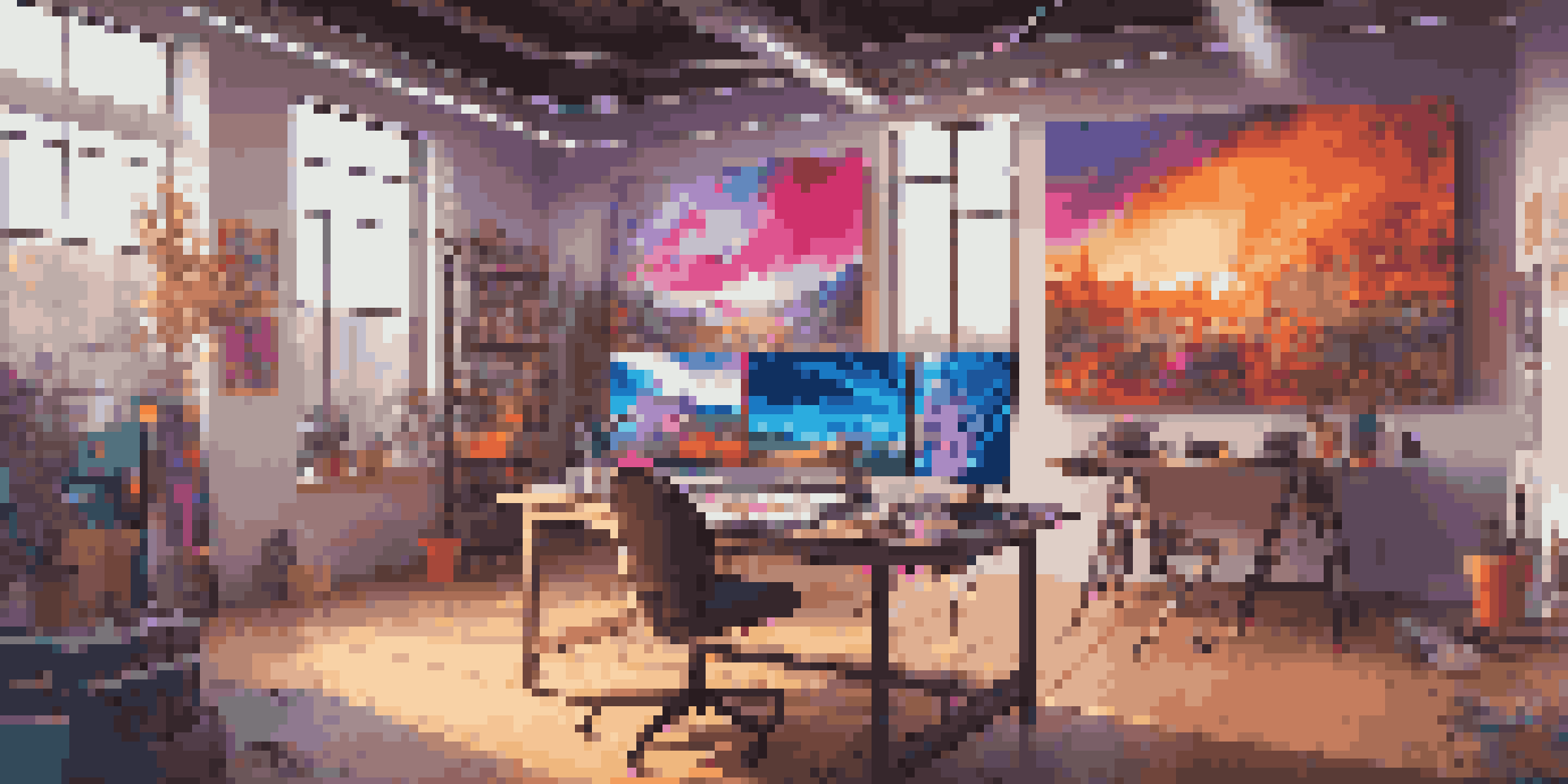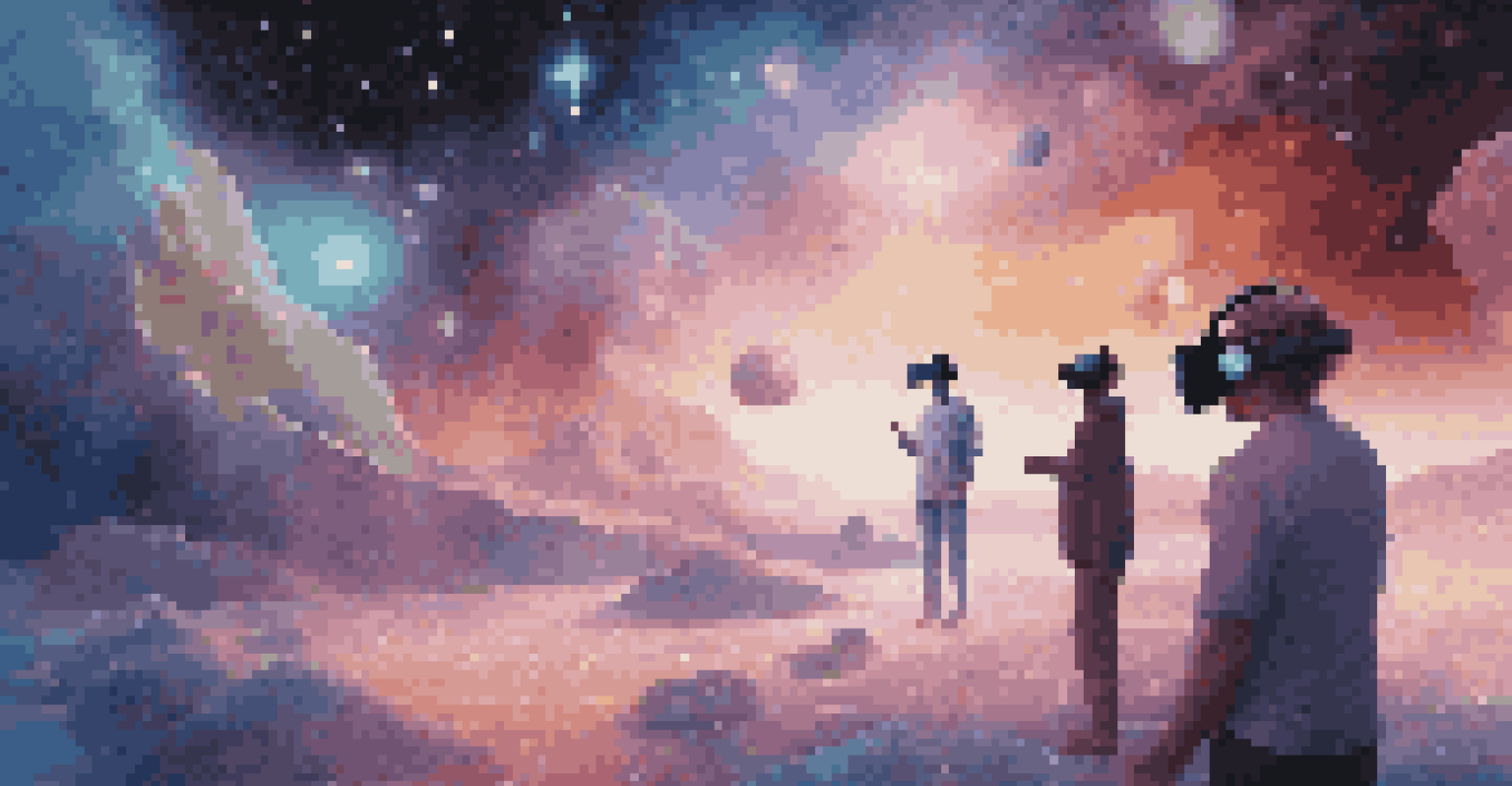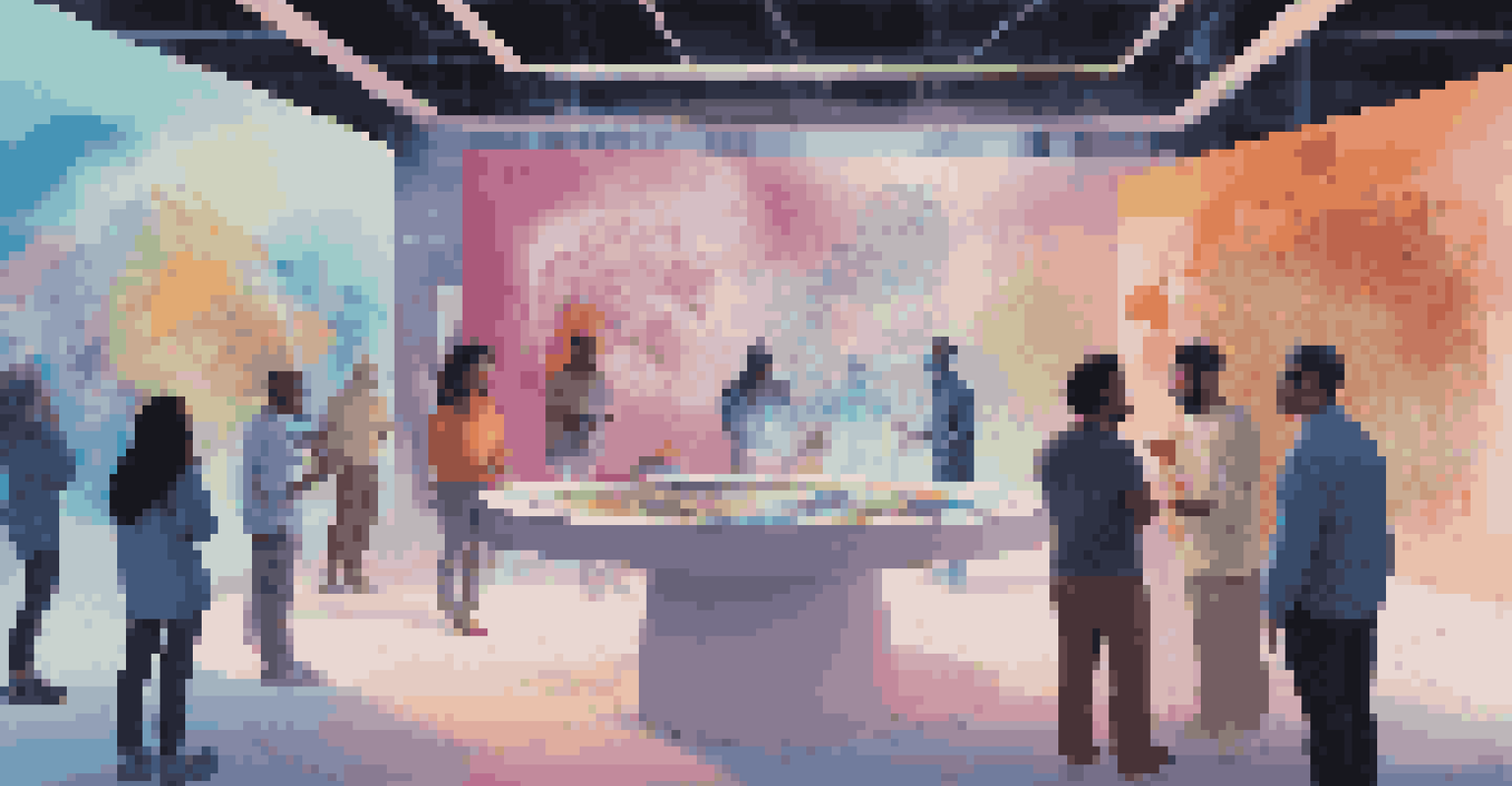Virtual Reality and the Evolution of Digital Art Movements

The Rise of Digital Art in the 21st Century
Digital art has come a long way since the dawn of the internet. In the early 2000s, artists began to explore new mediums, using software to create vibrant visuals that challenged traditional art forms. This evolution has not only expanded the definition of art but also made it more accessible to a wider audience.
Art is not what you see, but what you make others see.
The explosion of social media platforms has allowed digital artists to share their work instantly, fostering a global community. Artists can showcase their creations to millions, gaining recognition without the need for a traditional gallery. This democratization of art has paved the way for diverse voices and styles to emerge.
As technology continues to advance, so does the potential for digital art. With powerful tools like graphic design software and animation programs, artists can push their creativity beyond limits, leading to the birth of innovative movements that merge technology with artistic expression.
Understanding Virtual Reality (VR) Basics
Virtual reality, often abbreviated as VR, refers to computer-generated environments that simulate real or imagined experiences. By wearing a VR headset, users can immerse themselves in a 3D world, engaging with it in a way that feels incredibly lifelike. This technology allows for an interactive experience that traditional forms of art simply cannot replicate.

The concept of VR isn't new; it has roots in the 1960s with the invention of the Sensorama. However, it wasn't until recent advancements in computing power and graphics technology that VR became accessible to the masses. Today, VR is not just for gaming; it’s a powerful tool for artists to create and explore their work.
Digital Art's Accessibility Expands
The rise of social media has democratized art, allowing diverse voices to share their digital creations globally.
Understanding VR is essential for artists looking to incorporate this technology into their practice. By embracing VR, artists can create fully immersive experiences that engage viewers on a deeper level, transforming how art is perceived and interacted with.
The Intersection of VR and Digital Art
As digital art continues to evolve, the integration of VR is opening up exciting new possibilities. Artists can create immersive environments where viewers can walk through their creations, experiencing art in a three-dimensional space. This shift allows for a more profound connection between the artwork and the audience.
The computer is a tool for communication and creativity.
For instance, artists can build entire worlds filled with their work, inviting viewers to explore different dimensions of their creativity. This interactivity provides a unique way for audiences to engage with art, making the experience personal and memorable. It's as if the viewer becomes a part of the artwork itself.
Moreover, the use of VR in digital art has enabled collaborations across borders. Artists from various backgrounds can come together in a virtual space, sharing ideas and techniques, which enriches the digital art landscape. This fusion of creativity is helping to shape new movements in the art world.
Notable VR Art Projects and Artists
Several pioneering artists have embraced VR to create groundbreaking works that challenge the conventions of traditional art. For example, projects like 'The Night Cafe' allow users to step inside Vincent van Gogh's iconic paintings. This innovative approach brings a fresh perspective, making classic art accessible and engaging.
Another notable example is the work of sculptor Jon Rafman, who uses VR to explore themes of memory and nostalgia. His virtual installations invite viewers to navigate through fragmented memories, creating a thought-provoking experience. Such projects highlight the potential of VR as a storytelling medium.
VR Revolutionizes Artistic Experience
Virtual reality offers immersive environments where audiences can interact with art in innovative and personal ways.
These artists are not just creating art; they are pushing the boundaries of what art can be. By experimenting with VR, they are redefining artistic expression and opening up new avenues for creativity that were previously unimaginable.
Challenges Faced by VR Artists
Despite the exciting possibilities, artists working in VR also face several challenges. One significant hurdle is the accessibility of VR technology; not everyone has access to the necessary hardware, which can limit audience engagement. This disparity can create a divide within the art community, where not all artists have the same opportunities.
Additionally, creating VR art requires a unique skill set that combines traditional artistic talent with technical proficiency. Artists must learn new software and tools, which can be daunting for those who are accustomed to conventional mediums. This learning curve may deter some artists from exploring VR.
Finally, there’s the issue of how to monetize VR art. Unlike traditional art forms, where physical pieces can be sold, the digital nature of VR presents challenges in ownership and value. Artists must navigate these complexities to ensure they are compensated for their innovative work.
The Future of VR in Digital Art Movements
Looking ahead, the potential for VR in digital art is vast. As technology continues to advance, we can expect to see even more innovative applications of VR in the art world. Artists will likely find new ways to create immersive experiences that captivate audiences and transcend traditional boundaries.
Furthermore, as VR becomes more mainstream, we can anticipate a shift in how art is taught and experienced. Educational institutions may begin to incorporate VR into their curriculums, allowing students to explore art in ways that were previously unimagined. This shift could inspire the next generation of artists to experiment with new techniques.
Challenges for VR Artists Persist
Despite the exciting possibilities of VR, artists face hurdles like access to technology and the complexity of new skills.
Ultimately, the future of VR in digital art movements is bright. As artists continue to push the envelope and challenge conventions, we can expect a rich tapestry of creativity that reflects the ever-evolving relationship between technology and art.
Conclusion: Embracing Change in the Art World
In conclusion, the evolution of digital art has been significantly influenced by the advent of virtual reality. This technology has opened up new avenues for artistic expression, allowing artists to create immersive experiences that engage audiences in unprecedented ways. As we navigate this exciting landscape, it's essential to embrace change and the opportunities it presents.
The art world has always been about innovation and pushing boundaries, and VR is the latest tool in an artist’s toolkit. By experimenting with this technology, artists are redefining what it means to create and experience art. The intersection of VR and digital art is not just a trend; it's the future.

As we continue to explore the possibilities of VR, we can look forward to a richer, more diverse art scene that reflects the voices and visions of artists around the globe. Embracing this change will undoubtedly lead to a new renaissance in the art world.